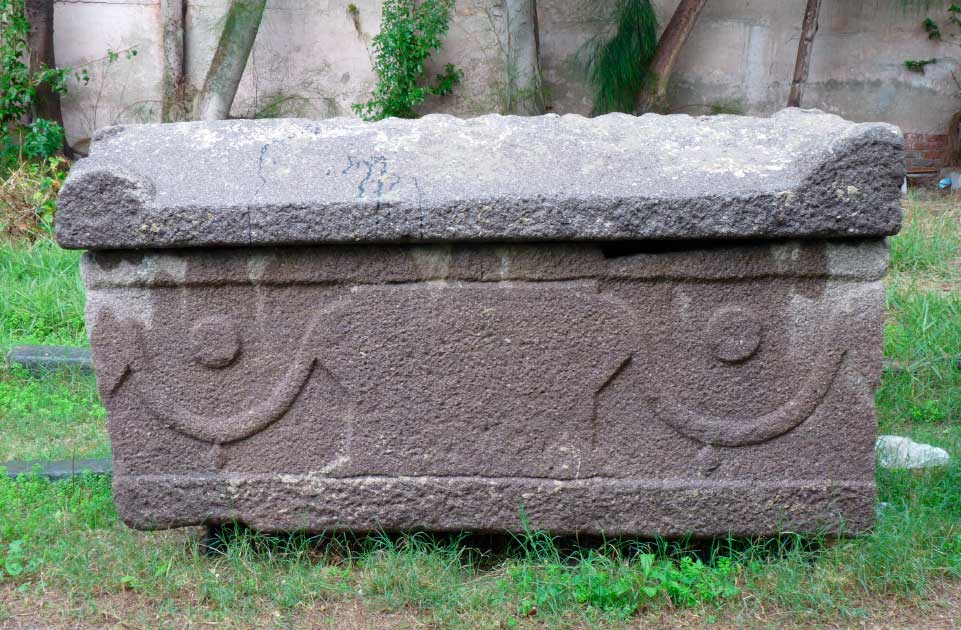In the ancient city of Assos in Turkey, a fascinating phenomenon occurred involving the stone sarcophagi (meat eater tombs) within the Assos necropolis. These sarcophagi had the ability to decompose bodies at an unusually rapid rate. Instead of the typical timeframe of 50 to 200 years for bodies to disintegrate, it took merely 40 days in these sarcophagi. As a result, they earned the name σαρκο φαγοσ (‘sarko fagos’) in Greek, meaning ‘flesh-eater,’ which ultimately gave rise to the word ‘sarcophagus.’
Assos: A Historic Town in Turkey

Assos, located in the Çanakkale Province of Turkey, is a small town with a rich historical background. It was established between 1000 and 900 BC by Aeolian colonists from Lesbos. The settlers constructed a Doric Temple dedicated to Athena atop a crag in 530 BC. This temple served as the ruling seat of Hermias, a student of Plato, who brought great prosperity to the region and transformed Assos into a hub for renowned philosophers. In fact, Aristotle himself was married to Pythia in Assos in 348 BC. However, this “golden period” of Assos came to an end when the Persians arrived and brutally tortured Hermias to death. Alexander the Great subsequently expelled the Persians in 334 BC. For the following century, the Kings of Pergamon governed Assos until they lost control, leading to its absorption into the Roman Empire.
The Evolution of Sarcophagi (Meat Eater Tombs) in Assos
During the 5th century BC, the first sarcophagi emerged in Assos’ necropolis. These early sarcophagi were simple coffins crafted from andesite stone, featuring a flat cover. Over time, during the Roman era, the sarcophagi became more intricate and ornate in their designs.
The unique qualities of the sarcophagi were quickly recognized, and they were widely traded from the harbor of Assos, reaching far-flung destinations such as Rome and Egypt.
The Origin of the Word ‘Tomb’ and its Association with Assos
Interestingly, Assos holds the distinction of being the birthplace of the word ‘tomb’ as a concept to describe the stones used in the city. The renowned Roman writer Plinius mentioned the specific type of stone employed in the Assos tombs within his extensive work, “History of Nature.” According to Plinius, bodies placed in tombs constructed from this stone would entirely decompose within a mere 40 days. Numerous ancient resources further attest to the prominence of this stone, revealing the grandeur of the tombs crafted from it.
The allure of Assos tombs transcended borders, as evidenced by their presence in various countries. The existence of these tombs in foreign lands suggests their significance and the immense value placed upon them. It is apparent that those who read Plinius’s accounts were particularly drawn to the Assos meat eater tombs. Typically measuring two meters in length and 80-to-90 centimeters in width, these tombs can also be found in wider and longer dimensions within Assos. With a weight of approximately three tons, their most notable feature lies in their composition of andesite stone, accentuated by exquisite decorative elements. These tombs are truly exclusive to Assos and differ from their counterparts in Rome, where long sides are adorned with three wreaths, as opposed to the two wreaths found on the tombs of Assos.
Unraveling the Mystery of the “Meat Eater Tombs”
Despite extensive study, scientists have yet to fully comprehend the properties of the stone that cause rapid decomposition of the bodies within the sarcophagi. This is why the sarcophagi called as one of the meat eater tombs. However, ongoing research aims to unravel the mystery surrounding these intriguing ‘meat-eater’ sarcophagi of Assos.
Conclusion
The ancient city of Assos captivates historians, archaeologists, and visitors alike with its remarkable tombs. The origin of the word ‘tomb’ and its association with Assos further emphasizes the historical significance of this site. The unique properties of the stone used, combined with the elaborate decorations and international appeal of the tombs, contribute to their enduring legacy.



